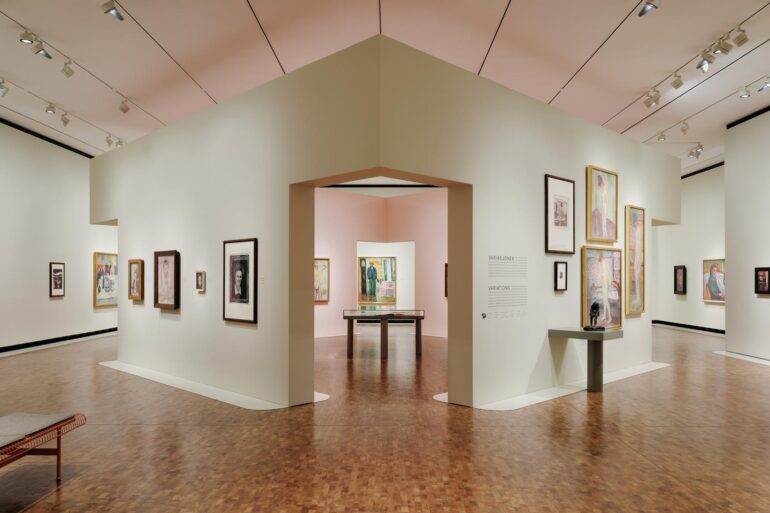TL;DR:
- Munch Museum in Oslo collaborates with Tata Consultancy Services (TCS) to utilize AI for interactive art experiences.
- The museum aims to make its extensive art collection more relevant and accessible to the public.
- AI and ML algorithms are used to reveal Edvard Munch’s artistic processes and guide users to draw in his style.
- A prototype of the real-time drawing interface is in development, with plans to test it with the public and launch a beta version by 2024.
- The long-term vision includes incorporating AI-led experiences into exhibitions and exploring commercialization opportunities.
- This unique partnership between Munch Museum and TCS is driven by shared research interests and a commitment to innovation.
- The use of AI in the art sector offers challenges and opportunities, with the rapidly changing technology landscape enabling faster project processes and new possibilities.
Main AI News:
The Munch Museum in Oslo, home to the world’s most extensive collection of art dedicated to Norwegian artist Edvard Munch, is leveraging the power of Artificial Intelligence (AI) to provide innovative and interactive experiences to its visitors. Partnering with technology specialist Tata Consultancy Services (TCS), the museum is embarking on a groundbreaking project that uses Machine Learning (ML) algorithms to unveil the artistic processes of Edvard Munch, allowing audiences to engage with art in new and exciting ways.
AI Opens Doors to Art’s Hidden Dimensions
Birgitte Aga, Head of Innovation and Research at Munch Museum, emphasizes the importance of AI in preserving and presenting the extensive collection of artworks, non-art objects, and writings, spread across 11 galleries on 13 floors. This collaboration with TCS aims to make the collection more relevant and accessible to the public. Aga describes Edvard Munch as a prolific artist who left behind thousands of drawings and sketches that reveal his creative journey. The museum’s goal is to bring this artistic process to life, offering a deeper connection to Munch’s work.
Bridging the Gap between Art and Audience
In an age where audiences seek immersive experiences, the Munch Museum is striving to increase interactivity and provide richer experiences to its visitors. The emergence of generative AI applications has shown the creative potential of technology in the art world. The museum, in collaboration with TCS, is training an ML algorithm with Munch’s drawings to answer questions such as how Munch created a painting, where he started, what lines he used, and more. The result is a real-time drawing experience that guides users to draw in Munch’s style.
Prototyping and Future Vision
The user interface, currently in the prototype stage, involves a back projection on a transparent surface. Users can place a sheet of paper on the interface and start drawing, with the AI providing real-time guidance. The project is progressing rapidly, with plans to test the prototype with the public in the coming year and a beta version targeted for September 2024. The long-term vision includes incorporating this AI-led immersive experience into an exhibition of Munch’s drawing archive and exploring opportunities for its use in other museum spaces.
Accessibility and Commercialization
The Munch Museum aims to make this immersive experience accessible to a diverse audience while exploring commercialization opportunities. The potential to apply this technology to unresolved challenges in the art world is significant. As the museum tours exhibitions worldwide, it sees an opportunity to take the interface to various locations, expanding its reach and impact.
A Unique Partnership
The collaboration between Munch Museum and TCS represents an innovative and evolving partnership that emerged from shared research interests. Both parties are eager to explore the potential of their cooperation further and identify new opportunities in the art and technology landscape.
Challenges and Opportunities
Working with AI and ML in the art sector presents both challenges and opportunities. The rapidly changing technology landscape offers the potential to expedite project processes and achieve results that were once unimaginable. The Munch Museum’s pioneering effort demonstrates the commitment to embracing innovation to enrich the world’s understanding of art.
Conclusion:
The Munch Museum’s use of AI in conjunction with TCS showcases a remarkable fusion of art and technology. By harnessing the power of AI and ML, the museum is not only preserving its collection but also creating engaging, immersive experiences that bridge the gap between art and audiences. As this partnership continues to evolve, it is poised to transform the way we interact with and appreciate the art of Edvard Munch, opening new doors to the history of art for audiences around the world.

